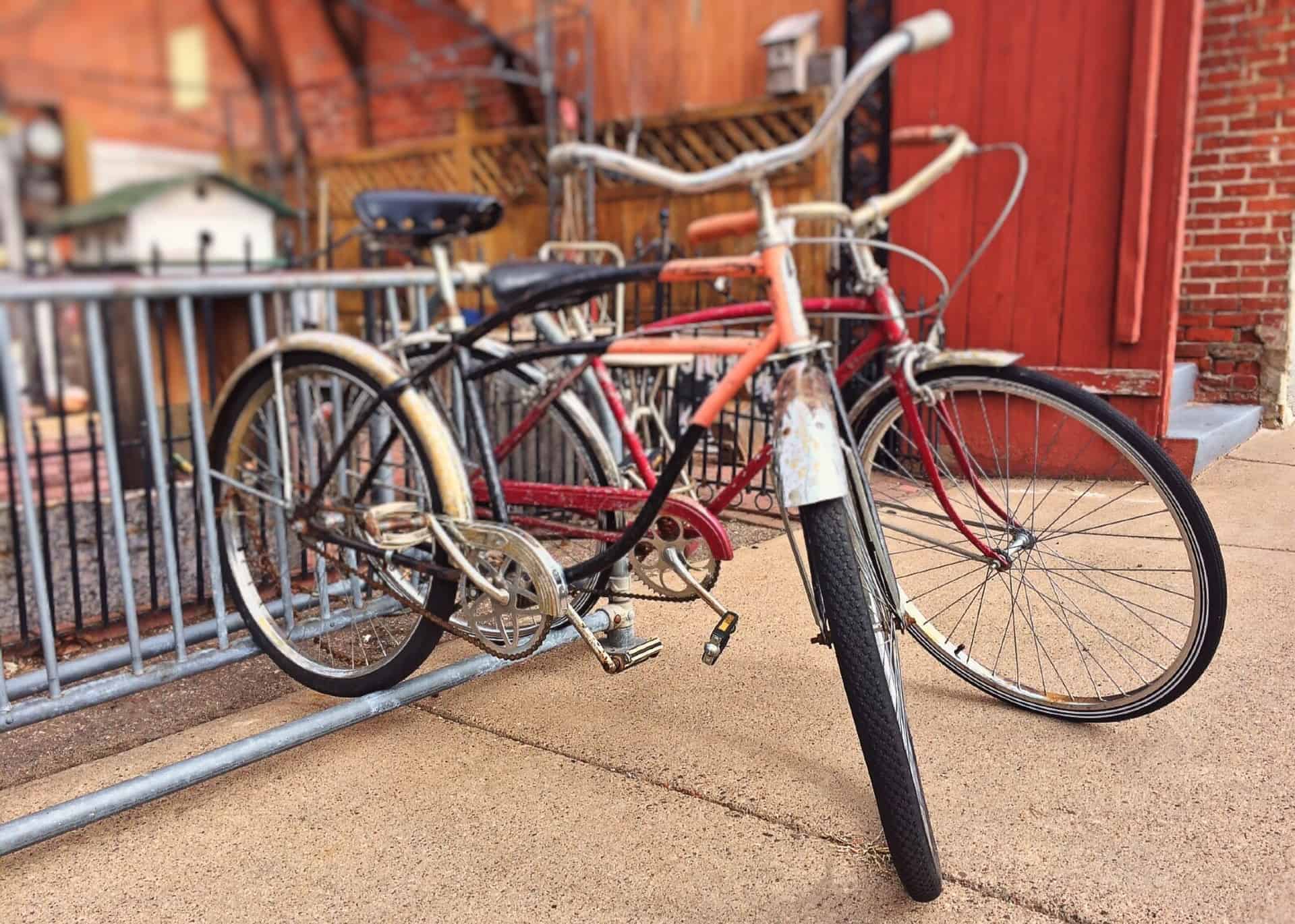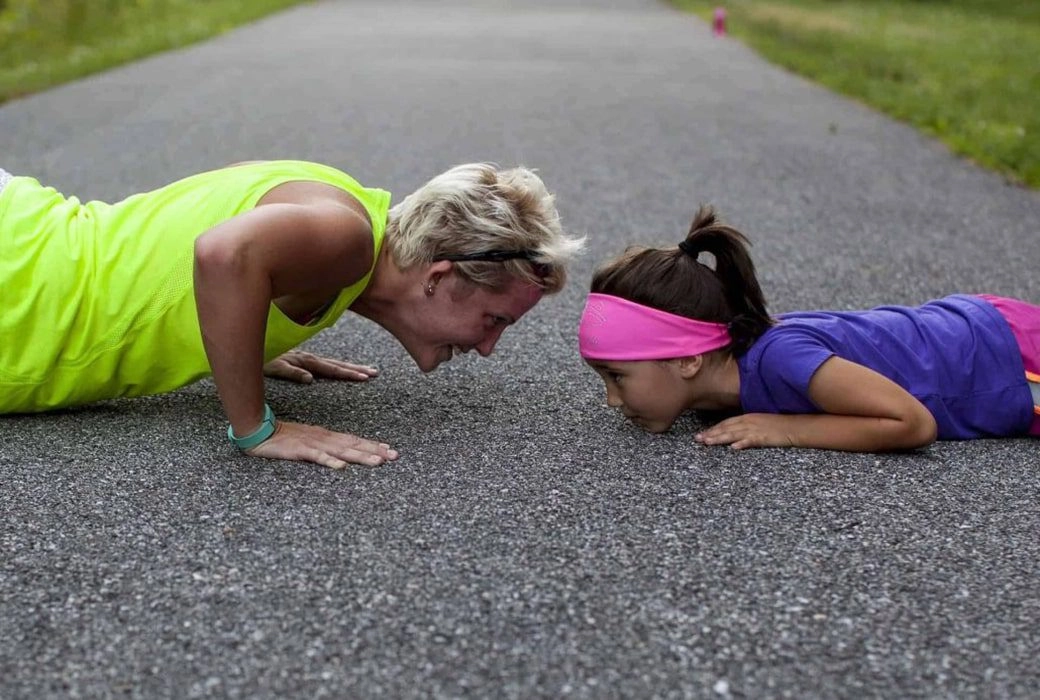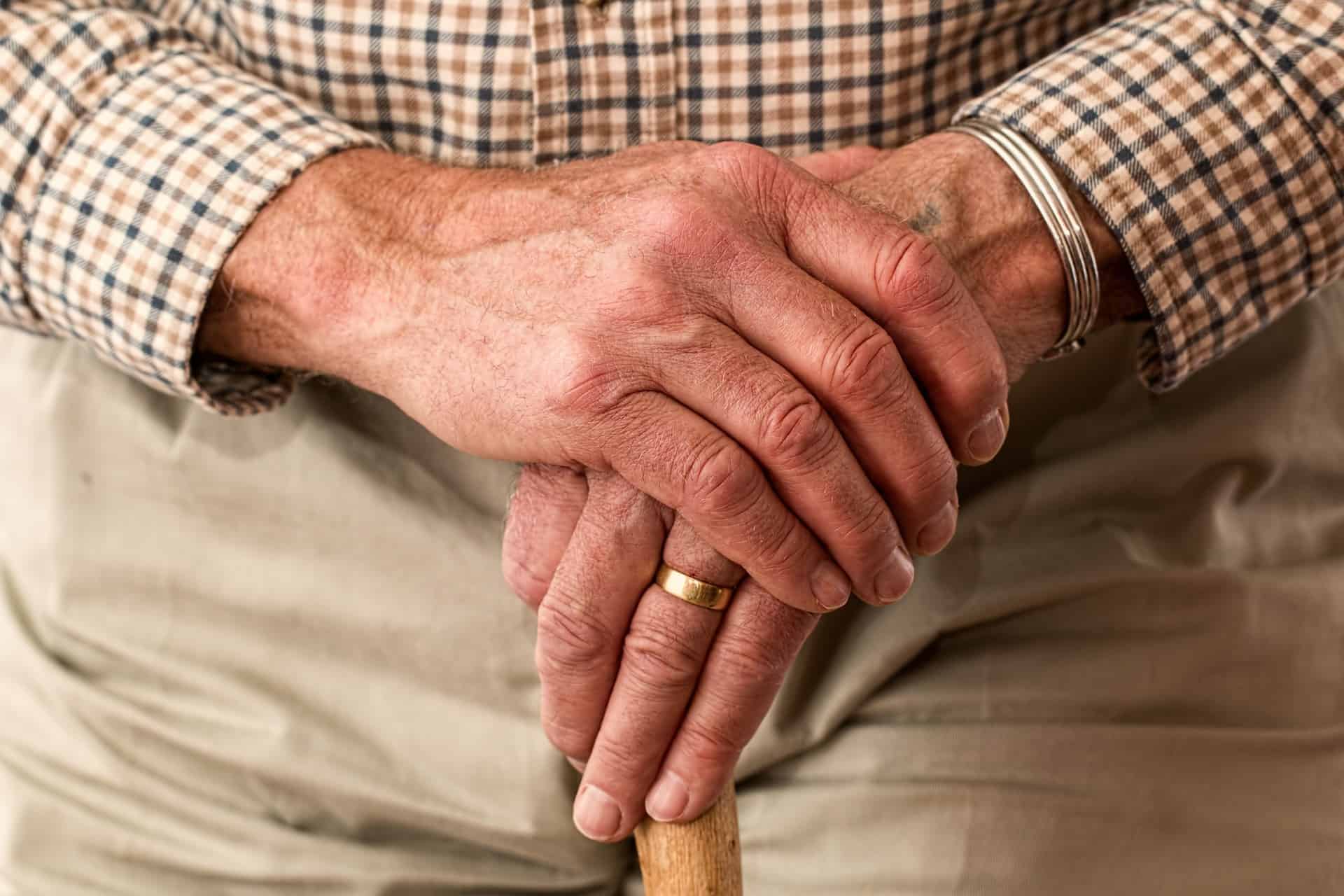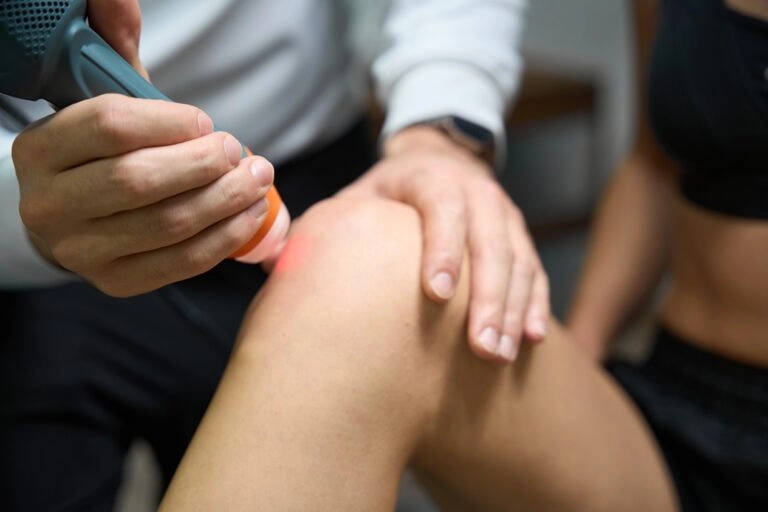Muscle strength, flexibility, and balance begin to plateau or even decrease as early at 35 years of age. This can make regular exercise challenging and even frustrating. Progress must be measured differently and goals need to be set accordingly. Instead of seeking to be the strongest, fastest superhero on the block, perhaps we can work to avoid repeated trips to the emergency room.
Alterations to gait, balance, and physique are not always a direct a result of age alone, even in seniors. “Most changes in gait are related to underlying medical conditions and should not be considered an inevitable consequence of aging,” says the American Academy of Family Physicians. Decreasing the intensity of past injuries can be a key factor in increasing safety for seniors when choosing exercises.
Stop immediately if pain occurs at any time during any exercise activity.</span
Balance Activities
The body’s natural sense of balance often changes as we age. In turn, this change in balance can lead to an increased risk for falls. Add to this a less agile body and – “Ouch!” Onto the ground we go!
Here are a few senior friendly balance activities that can be done on any level floor space:
- Walk a straight line on the floor for ten feet. Be sure your path will stay clear. Hold onto a strong family member while in motion. Do this two to three times daily.
- Stork Stance. Stand arm’s length from a wall or countertop. Hold one arm out ready to catch yourself if necessary. Look at something at eye level, while balancing on one foot for ten seconds. Switch feet. Repeat three times daily.
- Baton Practice. Find a stick, baton, umbrella, or another cylindrical item. Try to balance the item on your hand vertically, improving hand-eye coordination and arm strength. Be patient with yourself. Keep practicing daily with different items. Is wearing a helmet necessary? Maybe! Have fun with the grandkids on this one!
Chair Exercises
Chair exercises allow for movement of the arms and legs without putting excess stress on joints. Starting without weights and then adding one or two pounds is best. This may be plenty for quite some time. Do not twist or turn arms, legs, or joints in any manner while using weights.
Small cans of vegetables or a bag of rice are often a great choice and are usually readily available. Bonus: You can eat them afterward and the pictures will change more often! Do these three to four times weekly or more.
- Arm Raises. Sit upright in a chair. Raise both arms out straight at a 90-degree angle and hold for ten seconds. Try to extend fingers and keep hand flat. Do this five to ten times. Also, try raising arms straight into the air to be perpendicular to the floor.
- Adapted Extended Side Angle Pose. Sit upright in a chair. Reach the left hand down to touch your left foot or ankle. At the same time, raise your right hand as high as possible into the air and face to your right. Hold for twenty to thirty seconds. Switch sides. Repeat three times.
- Leg Raises. Sit upright in a chair. Raise each leg out straight for ten seconds. Do this five to ten times. Switch legs. Also, try balancing a bag of ice on one ankle while raising each leg. When the bag of rice falls off, you can practice the Adapted Extended Side Angle Pose again!
Walking or Brisk Walking
- Walk on an even and level surface for a consistent 20 to 60 minutes, three to seven times weekly.
- Wear good, sturdy shoes that have grip.
- Carry water, sunblock, identification, and a phone in case of a fall.
- Walk with one or more partners if possible.
Yoga
Having a friend practice yoga with you can be very beneficial. Each person can review the other’s form for proper body placement, or just offer a lot of laughs in the process.
Here are a few poses to keep home practice interesting:
- Tree Pose helps with hip stability. This is a fun one to try if the Stork Stance (above) becomes easy. While this one is preferable with bare feet, it may be easiest to try it with sturdy shoes the first couple of times. Stand near a wall if needed to catch yourself. Focus on something at eye level straight ahead. Place legs together and arms straight overhead making a triangle shape with palms together. Raise one leg slightly off the ground so that your toes are still on the ground and your heel is touching the inside part of the opposite ankle. Hold for 20 to 30 seconds as possible. Switch legs. Try one to three sets daily. For some added fun, try looking into a partner’s eyes without laughing as you complete this pose!
- Bird Dog is great for back support and the abdominals. It is also fun for grandkids to try to do with Grandma! Begin with hands and knees on the floor. Place a folded towel or small blanket under your knees if needed. While facing the floor, bring one arm forward as far past your head as you can. Lift the opposite leg back and up as far as you can. Hold for 10 to 30 seconds. Switch sides. Do three to five sets. Try this two to three times weekly.
- Star Pose benefits the whole body, tip to toes. Chair Star Pose is the same but from an upright, seated position. While standing in an open space, stretch both arms straight out to each side. Palms should be opened and flat with fingers fully separated. Look straight ahead. Move both feet out to each side, allowing your ankles to be just under each wrist. Pull up your kneecaps and toes, pressing your weight into the floor through your feet. Tuck your tailbone. Relax both shoulders. Breathe in and hold for a few seconds, releasing each breath gently. Repeat five to ten times daily.
Bicycle Touring

No, this has nothing to do with Le Tour de France or even with traveling long distances via bicycle. Intense cycling may be fine if proper training levels have been achieved. However, simply enjoying an afternoon in the breezy air can be refreshing and energizing.
Some bike styles (e.g. cruisers, townies, recumbents) also allow the body to sit in a more upright position as if sitting in a chair. This is opposed to hunching or stretching forward. Twenty to thirty minutes two to three times weekly, or once a week with other activities is plenty – but it’s addicting!
- Wear a properly fitted helmet.
- Ensure that both feet can touch the ground when stopped.
- Take plenty of water, a buddy or two, identification, and a phone.
- Know your route in advance.
- Follow bicycle safety laws in your area.
Water Walking or Swimming
Walking in the water is a great way to work the legs without putting stress on joints. Moving arms through the water while walking adds exercise for the upper body without the strain of lifting heavy weights. Lap swimming is also an enjoyable strain free activity. Using a kickboard maybe desirable if reaching over the head repeatedly is not recommended for you by a physician.
Body Weight Exercises
Attempting to take the elbows or knees to a 90-degree angle may be plenty sufficient for these exercises. Do not put joints past a 90-degree angle unless cleared by a physician to do so. Adding one or two sets of body weight exercises per week may be preferable if a regular exercise plan is not already in place.
For example, five push-ups and five wall sits two to three times per week is a good place to begin.
-
- Push-ups, Modified Push-ups. (half body at the knee, on the wall, or whole body). Start with five to ten repeats and increase as desired.
- Plank, Modified Plank. (half body at the knee, on the wall, or whole body). Start with five to ten seconds at a time and increase as desired.
- Wall Sits. Lean onto a wall free of items and slide down to allow the knees to reach a 90-degree angle. Remain in place for ten to twenty seconds. Slowly rise to a standing position. Repeat five to ten times.
- Standing Leg Raises. Place one hand on a wall, counter, or sturdy friend. Raise one leg straight and as high as comfortably possible. Hold for five to ten seconds. Switch legs and repeat. Complete five to ten sets. Check with a physician if an injury to the knees, hips, or ankles has occurred before doing wall sits or standing leg raises. The same for and injuries to the elbows before completing push-ups or plank exercises. Going all the way to the floor or achieving a perfect 90- degree angle is not necessary to gain strength with these exercises.
- Floor Fun. Getting off the floor may not sound like something to achieve. However, as our bodies age, it can become difficult. Everyone loves playing with tiny creatures on the floor, but getting up afterward is often not the easiest task. Here is one method for making that easier. (These steps can be accomplished on either side.)
- Lying Down. Roll onto your left side. Bring your right knee up and across the body, placing it on the floor. Place the right hand on the floor about shoulder high. Bring the left arm up from under the body, placing the left hand flat on the floor. Continue steps below.
- Sitting. Turn your body to the left until your right hand hits the floor across the body. Raise and turn the lower body to align with the upper body. Continue steps below. Push up onto your hands and knees. Reach up, placing your hands on a solid surface. Bring your strongest leg up, bending the knee. Place that foot flat on the floor. Push up with your hands and legs as you rise.
-
Exercises to Avoid in the Senior Years
If you already have a regular habit of completing these exercises, then you may be able to continue doing them. However, if you have not maintained these tasks before the age of 50, it is not advisable to start them unless directed by a physician.
- Running is a wonderful activity for the body. However, too much stress too quick is easy to acquire when running regularly. Only complete this as a new activity under proper supervision.
- Leg presses can put unnecessary strain onto the lower back and cause damage to spinal discs if not done properly. This is often a misleading exercise because it is done in a seated position, therefore, it often fools the ambitious. Take care to complete this activity only under the direction of a physician.
- Intense free weight activities can be stressful on joints and muscles. Lighter weights are the best place for seniors to begin. Weight machines – on the lightest settings – are often a great option with proper training and supervision. Heavy weight training activities should be avoided unless specifically directed by a medical professional.
- Any activity that your physician has decided may be unsafe for you.
Be sure to discuss any new program of intensity with a physician prior to embarking. Injuries often occur when we are overambitious and are easily avoided with safe practices. Take care to move slowly and enjoy each exercise, absorbing all the benefits.
The Beauty of Aging Gracefully

-
According to one Gallup Inc. study, “About half of adults in the U.S. have been to a chiropractor as a patient.” Chiropractic care can be used as a tool to help seniors further enjoy pain-free exercises of their choice. Treatments help maintain a higher level of physical well-being and thus allow for a greater level of physical activity. Better Health Chiropractic and Physical Rehab offers specialized care that fosters the ability to enjoy the active life in Alaska well beyond the arrival of graying hair.










